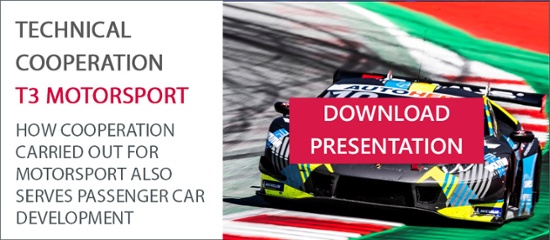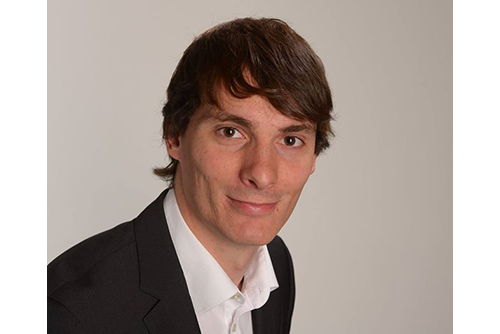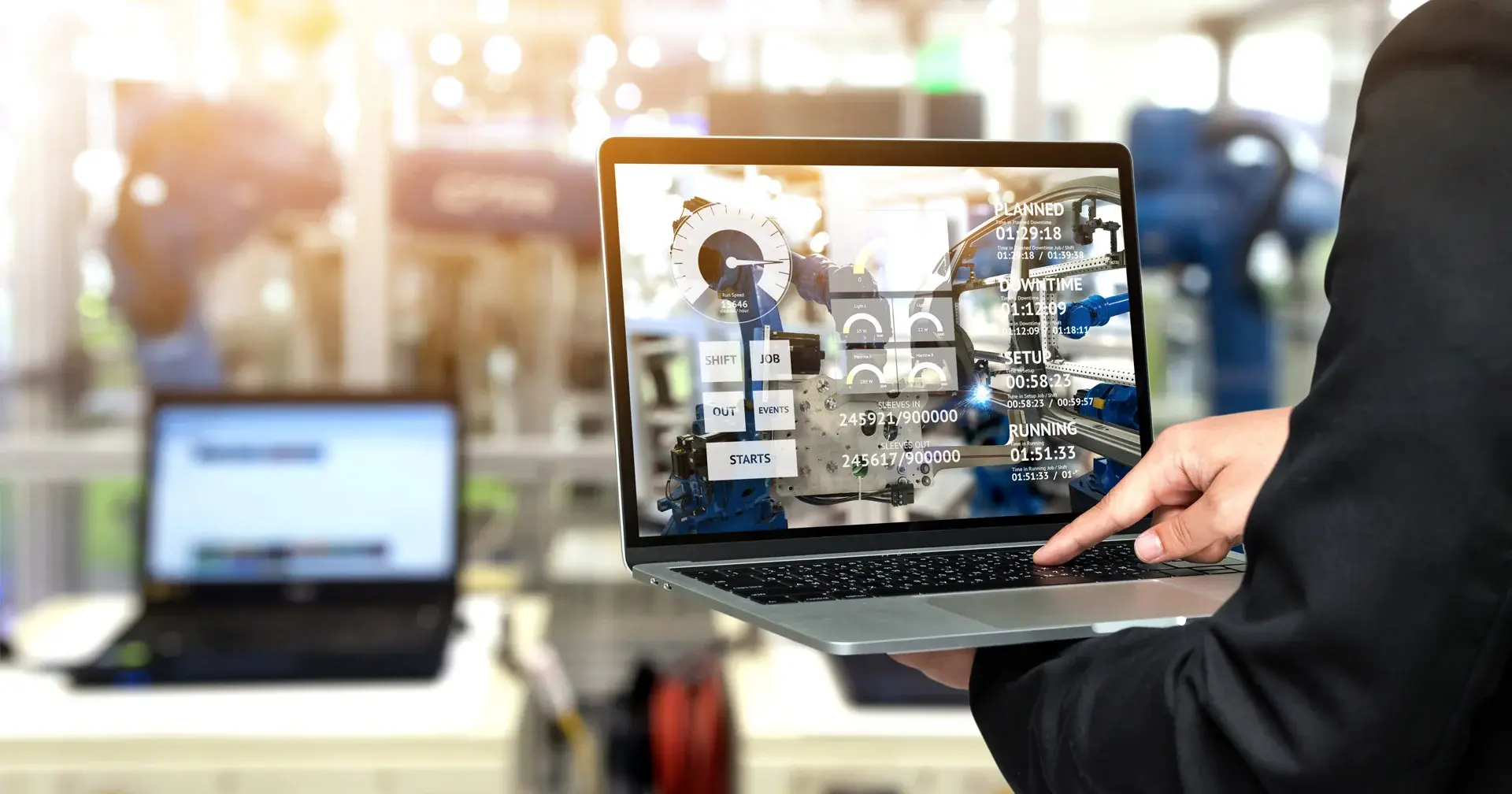As a general rule, EDAG's development activities center on passenger cars for regular road traffic. Occasionally, however, it is also a Lamborghini Hurácan GT3 EVO. Collaboration with the T3 Motorsport racing team is providing new findings in the fields of simulation and vehicle dynamics - and is also attracting graduates who see their future in vehicle development.
At the end of January, some of the university graduates at EDAG participated, at least from a distance, in the 24-hour race at Daytona International Speedway in Florida. As part of a cooperation with the T3 Motorsport racing team, they provided setup suggestions for the competition of the speed machines. What they had developed in theory in Germany was put into practice to help the motorsport team in Daytona to improve the efficiency of their setup optimization. And the results were impressive. Unfortunately, due to a technical problem, the team only started from position 22, but nevertheless managed to constantly fight their way ahead in the race, and as the best Lamborghini, ended up finishing in 8th place. This was the first time the T3 team had raced in Daytona, and they also had to do without the vehicle manufacturer's support.
Task in vehicle development ...
The aim of the cooperation between EDAG and T3 is to develop an extensive simulation landscape that addresses a wide variety of issues. This includes, for example, a parameterizable vehicle model on the basis of various different modules. These include a thermal brake model, the further development of a point mass model via a single track to a double-track kinematic model, a vehicle dynamics tire model, a detailed aerodynamic model to replace the previous simplified representation, and a precise engine model. All the models developed either already have been or will be validated with subject-specific tests, and so permit the most accurate parameterization possible. As a result, the team will benefit from more efficient training sessions. The focus of the brake simulation is partly on race-specific issues, for instance the question of which, under different conditions, is the best possible process for achieving optimum braking temperatures at the start of a lap or race. Likewise, regulation of the cooling air flow is being investigated to ensure an ideal braking temperature corridor for the braking system. However, limiting the maximum braking temperature also highlights issues that EDAG is already working on in the development of ordinary road vehicles.
Work has already been completed on the vertical dynamics simulation. To this end, a multiple-body simulation model of a vehicle in the GT3 racing class was developed for the 4-poster vehicle test stand; this combines the kinematics of the double wishbone axle, steering, stabilizers and body, while taking the payload and engine model into account. In addition, the hard points on the chassis of a real vehicle were measured to determine the kinematic points. Among other things, the simulation models created in this way enable pitch and roll behavior to be evaluated using 4-poster plug excitations. On top of this, a damper tool which, in addition to the initial damper setup, also enables wheel load fluctuations and body accelerations to be optimized was created.

... and driver assistance
In addition to tools of this type to support vehicle development, the racing team also needs solutions that will assist the driver. To this end, EDAG is developing a lap time tool in Matlab/Simulink. This tool includes an algorithm for determining lap times, and options for calculating an "ideal lap". The resulting findings can be used to optimize driving commands, and therefore help to perfectly coordinate the driver to the vehicle and the vehicle to the driver.
In addition, tasks such as extracting a route from real measurement data are also included in the current scope of analysis. This can be used, for example, to perform virtual simulations of a race track, but also to control the 4-poster vehicle test stand as though the vehicle were being driven around a track that is normally driven "live". Together with performing standard maneuvers, the ISO lane change for example, or driving down the Grossglockner High Alpine Road, such tests are designed for the homologation of production vehicles. Through the prior simulation of such test drives and subsequent optimization of both the models and the "actual", real vehicles, the development of passenger cars for regular road traffic benefits from research into motorsport.
Real data from virtual test runs
One of the challenges of developing simulation models is ensuring adequate data availability. The reason for this is that training and testing time with a racing car and the corresponding team is expensive. Although the simulations do pay off in the long run, the models first need be developed using a sufficiently large database, and then verified and validated, because a simulation model that is not valid may deliver incorrect results - which would result in poorer performance of the racing car, so putting an end to any hope of success in the race.

With a realistic simulation landscape, however, it is possible to optimize the interaction of the individual components. If, for example, the damper module is used to adjust the vertical dynamics, the adjusted load on - and wear of - the tires can be predicted at the same time. Generally, this is the only way in which a sensitivity analysis providing information on how deviations in individual factors affect each other, how they interact and where changes have the greatest impact becomes possible. On the basis of this knowledge, informed decisions can then be made about development paths, designs and vehicle configurations.
Using the validated simulation models, T3 Motorsport can run virtual practice laps, improve setup and lap times, regardless of the weather and under controlled conditions. In conjunction with automated driver feedback, this makes efficient use of training time to optimize the driver-vehicle combination.
Cooperation pays off
EDAG benefits in several ways from the cooperation with T3 Motorsport. On the one hand, it provides attractive subjects that graduates can choose from for their theses, furthering the cooperation partners' shared goal of "talent development". In the long term, this should enable solution-oriented technical staff to be trained and recruited. In addition, EDAG can make in-house use of the models and processes developed during the cooperation, so benefiting other projects - including the development of standard road cars. In this way, motorsport serves as a development and testing field for automotive broadband applications.
T3 Motorsport benefits from the know-how of engineering specialist EDAG. The racing team has neither the resources nor the time to build up its own simulation landscape. With individual components, too - tires for example -, EDAG has the advantage of its experience. In a race, what matters most is the ability to quickly make the best possible decisions. The better the simulation models, the better the forecasts on the basis of which the setup is decided. But great importance is also attached to simulations outside of the race. Questions concerning the direction development is to take, the preparation of tests and races, the follow-up and analysis of test and race laps, and even the vehicle configuration rely on the virtual imaging of vehicle and race track.
Broad range of applications
The requirements of the racing partner cover a wide range of subjects. For students working on a technical degree, therefore, there is a wealth of thesis subjects to which they can apply themselves. Many of the technical questions have potential that reaches beyond the development of a racing car, and can also be applied within the company and in other projects. As the interface between motorsport and the development of regular passenger cars, EDAG offers ideal conditions for supervising students in this area.
If you would like to know what possibilities the simulation models developed at EDAG offer in vehicle construction, talk to Felix Mergner, who is a development engineer, and oversees production vehicle and motorsport simulation projects. He is also the person you need to contact if you are a student interested in working with us. For more details about EDAG's simulation know-how and how cooperation carried out for motorsport also serves passenger car development, please see our presentation "Technical Cooperation with T3 Motorsport". Download the PDF here!






